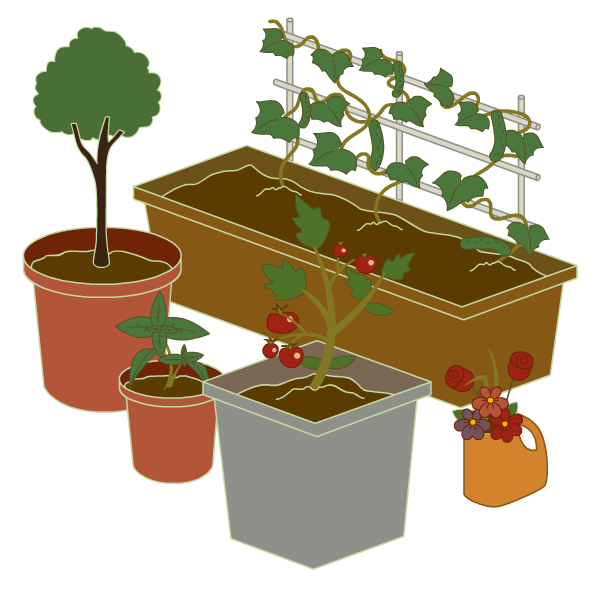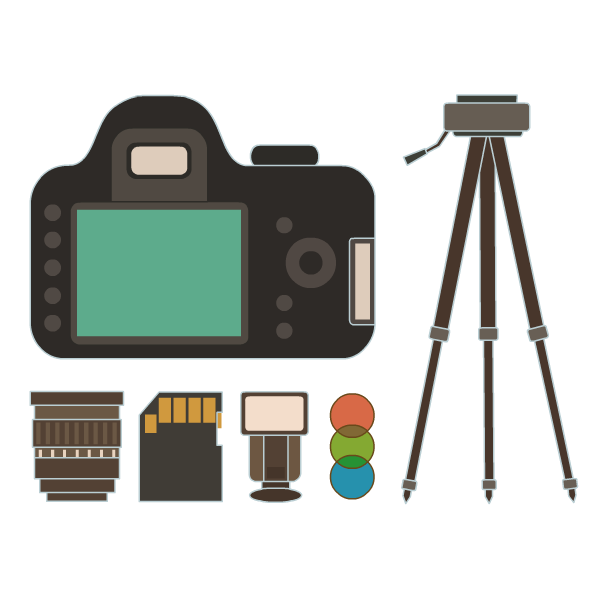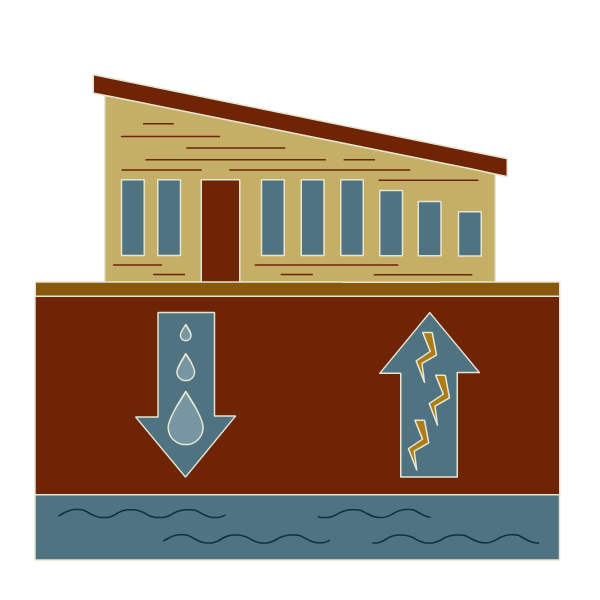No yard? No problem. Grow a thriving container garden.

Spring has officially begun, and many of us are starting to get the itch for the scent of fresh flowers and the taste of homegrown fruits and veggies. If you’re interested in digging into some gardening but have never tried it before, are short on outdoor space or simply want to try a new planting method that requires less setup, container gardening is a great option.
When should I prepare and plant my container garden?
Now is a great time to begin looking for starter plants, as most garden stores, nurseries and Saturday markets will be stocked up this time of year.
However, when it comes to planting, you’ll want to wait until temperatures warm up at night to avoid exposure to frost. As a baseline, make sure your soil is at least 50 degrees F for cool season vegetables. For warm season crops (like tomatoes) wait until the soil is at least 60 degrees F. Typically, the Willamette Valley will see these temperatures around the end of April or early May. Although overnight frosts can still occur later in the year in other parts of Oregon.
1. Choose a container
The best thing about container gardening is that you can essentially use any vessel: a terra cotta pot, a decorative planter or even recycled plastic like large yogurt containers or buckets from home improvement stores. Just make sure your container is at least eight inches deep.
No matter which container you choose, just remember to check for a drain hole. If there isn’t one, you can easily add one using a small drill. Or, if you don’t want to worry about drilling, place a plastic container (with a drain hole) inside a decorative pot and lift it to let the water out.
A few thoughts to consider when choosing your container:
- Terra cotta pots are good for plants that like a drier environment because the clay allows water to easily evaporate.
- Glazed pottery tends to hold in moisture well, but it can be heavy — something to consider if you plan to move in the near future.
- When using recycled containers, make sure to avoid those that have previously held detergents or chemicals. And don’t forget to thoroughly wash your recyclables before planting.
- Barrels work well for plants like trees and small shrubs, but they can also be on the heavy side.
2. Decide what to grow
- Many garden centers carry edible plants that are designed to stay small, like patio raspberries, zucchini, strawberries and bush cucumbers.
- Compact and determinant tomatoes, lettuce and peppers also grow well in containers, and they grow to a size that is easy to maintain.
- Herbs are easy to care for and add extra zip to a meal, dessert or drink.
- Grab a living basil or parsley plant from the grocery store and place it in your container with some fresh soil.
- Perennials like chives, oregano, thyme, rosemary and sage will come back every year, which makes them even more worthwhile.
- You can also try a climbing plant, like pole beans or peas. Simply attach a low-cost trellis to your container and watch them ascend.
- Scented geraniums (their aromas include coconut, nutmeg, rose, citrus and more) can add an extra element to your patio or porch.
3. Keep these care tips in mind:
- When the weather gets hot, containers tend to heat up faster than outdoor gardens since they are not insulated by the ground. Make sure to keep them well watered (2-3 times per day) during the summer months. Or move them out of the hot afternoon sun to avoid damaging the roots.
- The larger the container, the better your plants will grow. Don’t be afraid to give them some space.
- Containers lose nutrients quickly. Use liquid fertilizer weekly or add a slow release fertilizer. Follow the instructions on the container.
Need a little extra help? Contact OSU Extension
- Questions and photos can be submitted online to OSU Extension’s Ask an Expert service.
- You can also reach out to the Benton County Master Gardener volunteers at bentonmg@oregonstate.edu.
Students can garden on campus too!
The OSU Food Forest, established and maintained by University Housing and Dining Services, sits outside of Callahan Hall and features organic fruits, vegetables and herbs. Students who are interested in participating in the gardening process can help harvest, prune and sample the food being grown. If you’re interested, please join the listserv.
Or attend a Seed to Supper course
Created by OSU Extension specifically for beginners, Seed to Supper provides the tools you need to grow edible plants on a budget. In this free course, you will learn about building healthy soil, plant care, harvesting and using the food you grow. It also includes tips and additional guidelines on maintaining a container garden. Seed to Supper is offered in-person, on Zoom and at Saturday workshops in community gardens. Sessions are also available in Spanish.
Enjoy your bounty this spring and summer!
Related Stories
 Video file
Video file Video file
Video file Video file
Video file Video file
Video file